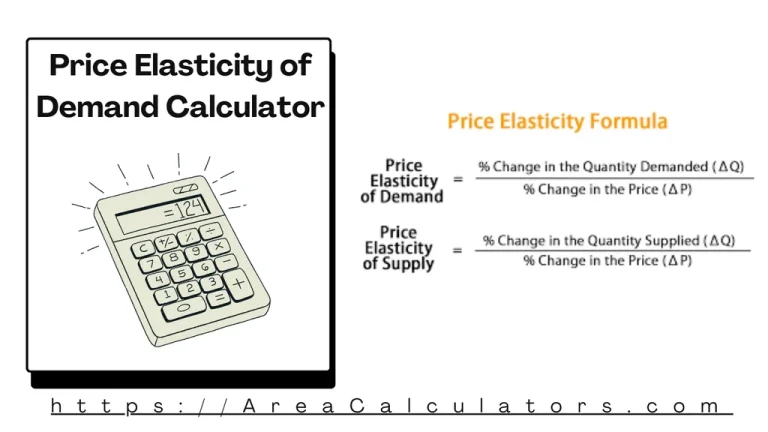Cylinder Weight Calculator [Cylinder Mass Calculator 2025]
The weight of a cylinder is calculated by multiplying its density by its volume, which is determined using the radius, height, and the constant π.
The weight of a cylinder is calculated by multiplying its density by its volume, which is determined using the radius, height, and the constant π.
The Cylinder Weight Calculator simplifies the process of determining the weight of solid or hollow cylinders made of various materials like steel, aluminum, or concrete.
This tool is especially helpful in industries where precise weight calculations are crucial for design, transportation, or engineering applications. With this calculator, you can compute the cylinder’s weight effortlessly, using its radius, height, and material density.
| Variable | Description |
|---|---|
| Weight of the cylinder (kg) | |
| Density of the material (kg/m³) | |
| Radius of the cylinder (m) | |
| Height of the cylinder (m) | |
| Pi constant () |
Example 1:
Material: Steel, Density () = 7850 kg/m³
Radius () = 0.2 m, Height () = 1 m
| Step | Calculation | Result |
|---|---|---|
| Compute volume | ||
| Calculate weight | 985.24 kg |
Example 2:
Material: Aluminum, Density () = 2700 kg/m³
Radius () = 0.3 m, Height () = 0.5 m
| Step | Calculation | Result |
|---|---|---|
| Compute volume | ||
| Calculate weight | 381.70 kg |
The Cylinder Weight Calculator is a practical tool that is used to calculate the weight of solid or hollow cylinders based on their dimensions and material density.
It is widely applied in industries such as manufacturing, construction, and engineering to determine the mass of objects like gas cylinders, steel pipes, or concrete pillars. This calculator simplifies complex weight calculations and ensures accuracy.
Using the calculator is straightforward. Input the cylinder’s dimensions (radius, height, and thickness for hollow cylinders) and select the material. For a solid cylinder, the volume is calculated as , where is the radius and is the height.
For hollow cylinders, the formula considers the inner and outer radii to compute the volume accurately. The material density is then multiplied by the volume to derive the weight.
This tool is ideal for determining the weight of various materials, such as steel, aluminum, or concrete. For instance, it can calculate the weight of a gas cylinder, the mass of a steel pipe, or even a hydraulic cylinder.
It also helps in specific scenarios like calculating the weight per meter of aluminum or understanding how much a hollow cylinder weighs in different units.
In essence, the Cylinder Weight Calculator is a versatile and efficient tool for accurate weight determination. By streamlining calculations and accounting for material properties, it supports diverse applications in engineering, construction, and manufacturing with precision and ease.
To calculate the Gating Ratio (GR), divide the area of the runner (AR) and the area of the gates (AG) by the area of the sprue (AS). This ratio helps design effective gating systems for casting, ensuring proper metal flow and minimizing defects. The Gating Ratio Calculator is a vital tool in casting design, aiding…

READ ALSO: Gini Coefficient Calculator

To convert markup to margin, divide the markup percentage (Mp) by 1 plus the markup percentage. This gives you the corresponding margin percentage (Mg). The Markup to Margin Calculator is particularly suitable for converting markup percentages into profit margins. By so doing, it ensures the accurate pricing and profitability analysis. This conversion is essential for…
To find the date 70 days from today, simply add 70 calendar days to the current date. For calculations excluding weekends, count only business days. 70 Days From Today Calculator Enter today’s date to calculate the date 70 days from now Today’s Date Date 70 Days From Today Calculate Reset The 70 Days From Today…

Determine the profit from pig farming by subtracting total costs from total revenue using the provided formula. The Pig Profit Calculator is an essential tool for pig farmers to evaluate the profitability of their operations. It considers various expenses like feed, healthcare, and labor against the revenue generated from selling pigs. Formula P = TR…

Multiply the weight of dry pasta by the cooking ratio to determine its cooked weight. The Dry to Cooked Pasta Calculator helps estimate the weight of pasta after cooking. Dry pasta absorbs water and increases in weight, typically following a specific conversion ratio. Formula: CP = DP ∗ R Variable Description Unit CP Cooked…